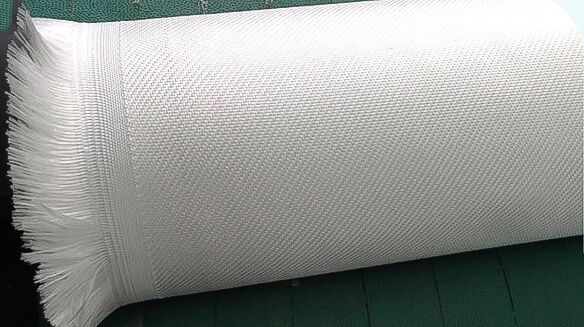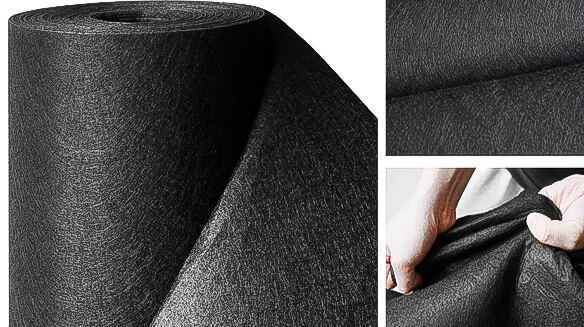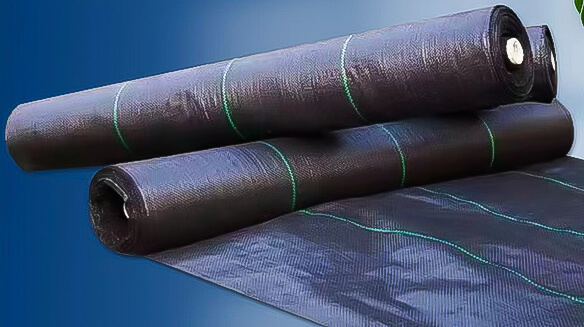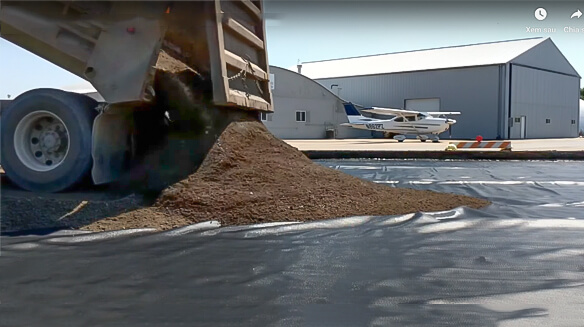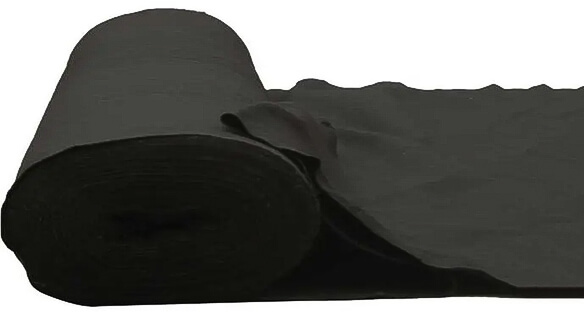Contents
Does Geotextile Fabric Let Water Through: Things to Know
Introduction
Curious about whether geotextile fabric permits water flow? We were too! Our inquisitive minds drove us to investigate this revolutionary material. We’ve unearthed interesting findings after detailed research into its properties. This blog post will reveal the intricacies of geotextile fabric’s water permeability. You’ll discover how it revolutionizes drainage systems by threading through its woven fibers. Ready to dive deep into this world?
Understanding Geotextile Fabric and Water Permeability
Geotextile fabric, encompassing needle-punched and poly-spun non-woven types, is purposely designed for optimal water permeability. These fabrics are integral in civil engineering and construction, offering versatility for use in roads, bridges, dams, and more. Needle-punched geotextiles are constructed using long fibers interconnected with needles, providing a flexible, sturdy structure ideal for soil stabilization and erosion prevention.
Poly-spun non-woven geotextiles are woven from polypropylene or polyester fibers into a robust mesh, enduring high pressure and offering superior mechanical strength, making them perfect for filtration, drainage, and soil improvement. The exceptional water permeability of geotextile fabric allows for unimpeded water transfer, vital in erosion control, soil stability, and improved soil drainage.

Needle-punched and poly-spun non-woven geotextile fabric
Let’s journey into the geosynthetics realm, focusing on a type called needle-punched and poly-spun non-woven geotextile fabric. This versatile material consists mainly of polyester or polypropylene fibers. They’re fashioned into a stable network via needle-punching or heat bonding.
Though less sturdy than woven varieties, it has a notable advantage. It possesses a high water permeability rate. This trait allows water to sieve through these fabrics effortlessly, maintaining soil stability.
It’s this very feature that makes them a top choice for drainage-intensive projects. Think French drains or landscaping, where aesthetics meet functionality.
Moreover, their compatibility with soils, rocks, and other geotechnical materials boosts their appeal. Both the construction and gardening sectors value them highly!

Woven and non-woven geotextiles
Permeability of geotextile materials
Ready to delve into the world of geotextiles? Let’s focus on permeability. In essence, permeability measures a material’s ability to allow water, other liquids, or even gas to pass through its weave.
Think of it like your kitchen sieve filtering unwanted bits from your juice. But envision that sieve as a scientifically advanced fabric—that’s our superstar: the geotextile.
In geotextiles, tiny pores or holes serve a crucial role. They ensure proper filtration and drainage, facilitating natural processes like plant root growth. The ingenious aspect? Geotextiles also excel at water retention—they filter impurities yet retain beneficial moisture for plants.
But there’s more! They’re also environmental defenders, helping to control soil erosion. They stabilize the soil, creating a balance between solid ground and airborne elements.
Benefits of Geotextile Fabric for Water Drainage
Geotextile fabric provides several benefits for water drainage, such as allowing water to pass through while preventing soil erosion and maintaining soil stability.
Allowing water to pass through
Geotextile fabric revolutionizes water management in both construction and gardening projects. This permeable material excels at drainage, enabling easy water flow while keeping soil particles in place. This is all thanks to its distinctive filtration ability.
From needle-punched to poly-spun non-woven versions, these durable geotextiles maintain solid soil stabilization. They prevent subsoil movement effectively. They form a barrier that allows water through but curbs erosion, keeping the soil secure.
These superior fabrics expertly manage water flow. They distribute it across broader areas for optimal drainage, even on steep slopes or high-water-flow regions. With this, geotextile fabric enhances landscaping drainage. It also boosts the efficiency of systems like French drains, resisting continuous moisture exposure.

Benefits of geotextiles for drainage
Preventing soil erosion
A key advantage of geotextile fabric in water drainage is its erosion-prevention capability. By forming a stable soil base and permitting water flow, geotextile fabric preserves soil integrity, stopping it from washing away.
This benefit is vital in construction projects, landscaping, and gardening. Here, soil erosion could result in structural instability or plant damage. The non-woven fabric in geotextiles allows water entry without disrupting existing soils. That makes it an ideal solution for controlling erosion and ensuring lasting stability.
Moreover, geotextile fabrics also serve as a filtration system. They limit soil particle movement while allowing water to flow freely. Whether it’s a French drain or slope and embankment reinforcement, geotextile fabric can greatly minimize soil erosion, ensuring your project’s success.

anti-erosion geotextile
Maintaining soil stability
Whether you’re a construction professional or a dedicated gardener, soil stability is crucial in your projects. Geotextile fabric proves essential here, particularly for water drainage.
Geotextile fabric does more than allow water through—it also stops soil erosion and ensures soil stability. It acts as a barrier, curbing soil particle movement but still permitting free water flow.
This filtration feature guarantees your soil’s stability, even amid heavy rainfall or irrigation. By incorporating geotextile fabric in your drainage systems or landscaping projects, you uphold the soil’s long-term durability. Plus, you won’t sacrifice its ability to efficiently drain excess water.
Applications of Geotextile Fabric in Water Drainage
Geotextile fabric finds numerous applications in water drainage, including French drains, landscaping and gardening projects, and construction projects.
French drains
French drains are key to effective water drainage systems in construction and gardening projects. They are designed to divert excess water, preventing buildups that could cause structural damage or harm plants.
For a successful French drain system, non-woven geotextile fabric is essential as a trench lining. This fabric permits easy water flow, acting as a barrier against soil particles. It prevents clogging, maintaining efficient water flow.
By incorporating geotextile fabric in French drains, you can effectively avoid water accumulation. Thus, you protect your structures and gardens from possible damage.
Landscaping and gardening
I thoroughly enjoy landscaping and gardening projects. They allow me to craft stunning outdoor spaces. An essential part of these projects is guaranteeing efficient water drainage. Geotextile fabric is critical here, aiding in water runoff management and soil erosion prevention.
With geotextile fabric, I can reinforce the soil, separate distinct layers, and filter water or runoff effectively. It forms a solid barrier but still permits water flow, making it ideal for landscaping drainage systems, like French drains or driveway water management.
Thanks to the non-woven geotextile fabric’s permeability, I can prevent excess water from harming or overwhelming the plants. Ultimately, using geotextile fabric in landscaping and gardening projects offers practical solutions for efficient water management and soil stabilization.

geotextile application
Construction projects
As a construction professional, I can vouch for the value of geotextile fabric in water drainage applications. Whether it’s road construction, landscaping, or any project needing efficient water management, geotextiles are indispensable.
These synthetic fabrics do more than prevent soil erosion. They also maintain stability by allowing water through while keeping soil particles in place. With geotextile fabric forming a strong drainage base, you ensure your construction projects’ durability and integrity.
Geotextiles play a critical role in everything from French drains to managing poor soil conditions. They help maintain your work’s overall quality and functionality. Therefore, if you’re aiming for durable, reliable results, it’s worth integrating geotextile fabric into your construction plans.
Conclusion
In summary, geotextile fabric is engineered to let water flow through, making it a superb choice for diverse water drainage applications. Its permeability aids in preventing soil erosion and preserving soil stability.
Whether it’s for French drains, landscaping projects, or construction sites, geotextile fabric has demonstrated its effectiveness in handling water flow and filtration. Select the suitable geotextile fabric for your specific needs to guarantee efficient water drainage and enduring durability.
FAQs
1. Does geotextile fabric allow water to pass through?
Yes, geotextile fabric is designed to allow water to pass through while still providing stability and filtration for the soil or other materials it is being used with.
2. Can I use geotextile fabric for drainage projects?
Absolutely! Geotextile fabric is commonly used in drainage projects as it allows water to flow through while preventing soil erosion and clogging of the drain pipes.
3. How does geotextile fabric prevent soil erosion?
Geotextile fabric acts as a barrier that stabilizes the soil by preventing fine particles from washing away with water runoff, thus reducing erosion and maintaining the integrity of the surrounding area.
4. Is geotextile fabric suitable for landscaping applications?
Yes, geotextile fabrics are often used in landscaping applications such as retaining walls or under pavers because they provide additional support, prevent weed growth, and allow for proper drainage without compromising the aesthetics of the project.
Related posts:
Is Geotextile Fabric Permeable: A Study Of Woven Geotextiles

